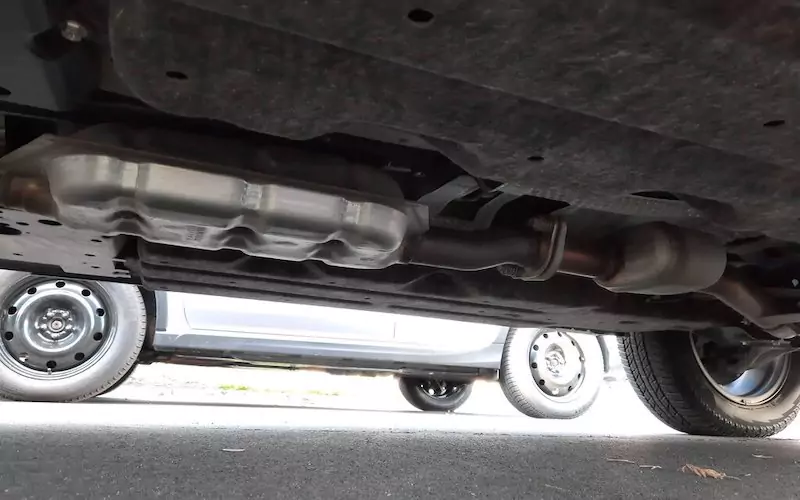When Do You Need To Upgrade Your Car’s Catalytic Converter?

A catalytic converter is one of the few car parts you might not consider replacing too often. After all, car manufacturers design it to last for years, doing what it does best: making the fumes less harmful to Mother Nature when it leaves the car. Such a function comes at a premium, however.
But like anything made with human hands, a catalytic converter will break down to the point that repairing it will be more costly. That won’t stop some car owners from trying to get the most out of its performance, searching for parts or replacements in catalytic converter inventories.
It begs the question: should you upgrade your catalytic converter? If such is the case, when’s the best time to do it? Here are several things worth knowing.

Re-Burning Engine Exhaust
Outside, a catalytic converter appears as a big slab that runs along the exhaust line underneath a car. However, the magic occurs inside, turning harmful combustion gases such as hydrocarbons and carbon monoxide into water and carbon dioxide, among other things.
The key is the honeycomb of rare earth metals lining the converter, namely palladium, platinum, and rhodium (which also makes it expensive). These metals enable the converter to regulate and manipulate the chemical makeup of the exhaust gases, primarily by reduction or oxidation.
- Reduction is removing oxygen from certain gases. For example, dangerous nitrous oxide loses its oxygen atom. It leaves the car as plain nitrogen, which plants need to grow.
- Oxidation is adding oxygen to certain gases. For example, harmful carbon monoxide gets an extra oxygen atom, leaving the car as carbon dioxide, which plants also need to grow. The same process also produces water from hydrocarbons.
At most, a typical unit usually contains nine grams of these rare earth metals. It may not look much, but it’s enough to convert up to 98% (or ‘re-burn,’ as some experts call it) of combustion gases into their safer counterparts. Note that there’s no such thing as a 100% conversion rate because the converter doesn’t always work under ideal conditions.
Converters Pre-1981
Here’s why you may want to upgrade that catalytic converter. Nothing speaks of America’s love for cars more than a 1970s Chevy or 1960s Dodge flying through the Interstate. One estimate claims that millions of cars from the baby boom and the following generation (1946–1980) are still on the road alongside their modern counterparts.
It’s safe to say Americans would want to hold on to their classics for as long as possible. Still, laws mandating cleaner emissions have left some classic car owners concerned. For example, the UK government’s mandate to increase the amount of ethanol in fuels won’t be ideal. The risk of sweating water can corrode the classic car’s mostly metal engine system.
Replacing catalytic converters is also a possibility. Depending on how far your classic car dates back, its converter may be one of the following now-phased-out types:
- One-way oxidation: These converters only focused on the oxidation process, primarily on carbon monoxide and hydrocarbons. It derives oxygen from an inefficient air injector.
- Dual-bed catalyst: This later model added a secondary air injector to improve oxidation and decrease the amount of nitrous oxide emitted.
Reduction wasn’t added to catalytic converters until 1981 with the introduction of the three-way system. These converters were far more efficient than their predecessors and adhered to growing clean-air legislation. As much as car enthusiasts want to keep a classic car as is, swapping out an out-of-date converter is more or less inevitable if they plan on driving it.

Increasing Power
Classic car owners aren’t the only ones who can benefit from a converter upgrade. Those who soup up their cars to generate more horsepower often swap out their stock converters for high-flow ones. These units work similarly to regular converters but feature a larger cross-section to accommodate the increased emissions.
If you’re thinking, ‘Cool, I should get one,’ hold your horsepower. There are two caveats.
First, some states have laws governing modifications of catalytic converters and installation of aftermarket ones based on California Air Resources Board (CARB) guidelines. If one from the original manufacturer isn’t an option, it should be at least a CARB-compliant one. Depending on the state, this rule applies to cars manufactured after 2001.
Second, experts say a high-flow catalytic converter won’t do much for a car with a stock engine. Think of this as drinking a teacup’s worth of coffee from a disproportionately huge mug. They advise only going high-flow if the engine makes 20% more horsepower than the original rating. Also, if you’re looking to enhance the overall appearance of your classic car, you can consider upgrading the headlights to stylish and modern mk6 golf headlights for a sleek and improved look.
Conclusion
In most cases, you’re fine keeping your stock catalytic converter, as it was designed to work with the car that comes with it. There are only two good reasons for upgrading to a more efficient one. First, you’re driving a classic or a heavily-modified modern one. Second, the Check Engine light is on, and a closer inspection found that the entire system is broken beyond repair.

